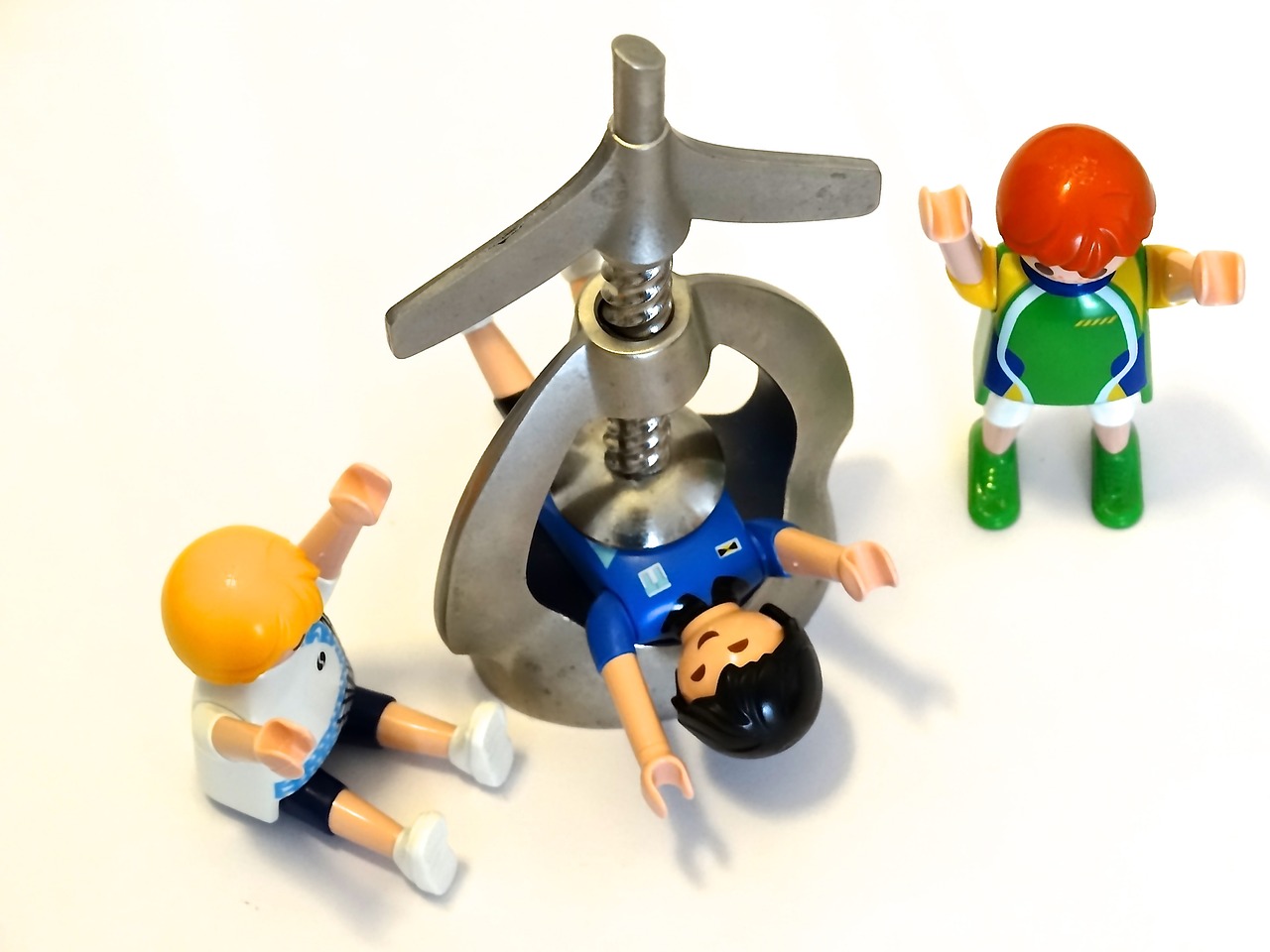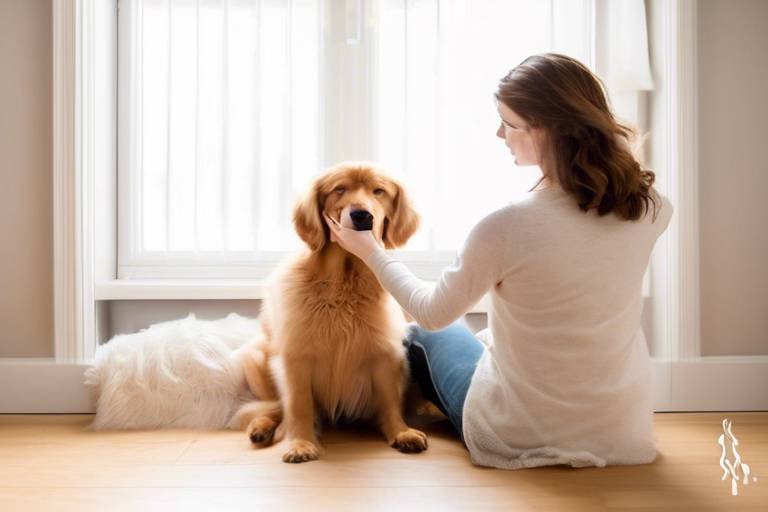Mental Health Matters - Caring for Your Pet's Emotional Well-being
When we think about our pets, we often focus on their physical needs—food, shelter, and exercise. But did you know that mental health is just as important for our furry friends? Just like humans, pets experience a wide range of emotions, and their mental well-being significantly impacts their overall health. A happy pet is not only more enjoyable to be around, but they also tend to be healthier and more resilient to physical ailments. So, how can we ensure that our pets are not just surviving but truly thriving? In this article, we’ll dive into the fascinating world of pet mental health, exploring the emotional needs of our companions and offering practical tips to support their well-being.
Understanding why mental health is crucial for pets helps owners recognize signs of distress and the impact of emotional well-being on overall health. Just like us, pets can feel anxiety, depression, and even stress. These emotions can stem from various factors, including changes in their environment, lack of social interaction, or even boredom. When pets are mentally healthy, they're more likely to engage in playful behaviors, bond with their owners, and exhibit a general zest for life. On the flip side, neglecting their emotional needs can lead to serious behavioral issues and health problems. So, it's essential to be aware of the signs that indicate your pet might be struggling emotionally.
Recognizing the signs of stress in pets is essential for timely intervention. Pets can’t speak up about their feelings, so it’s up to us to be observant. Common indicators of emotional distress include:
- Behavioral Changes: Pets may exhibit changes in behavior when stressed, such as increased aggression or withdrawal. Identifying these changes can help owners take appropriate actions to alleviate stress.
- Physical Symptoms: Stress can manifest physically in pets, leading to health issues like digestive problems or skin irritations.
Pets may exhibit a variety of behavioral changes when they’re feeling stressed. For instance, a normally friendly dog might become more aggressive or a playful cat may start hiding. These shifts can be alarming, but they are often a cry for help. It’s crucial to pay attention to these changes and consider what might be causing them. Perhaps there’s a new addition to the household, or maybe your pet is reacting to loud noises or changes in routine. Understanding the root cause can make all the difference in helping your pet feel secure again.
One common sign of anxiety in pets is excessive vocalization. Dogs may bark incessantly, while cats might meow more than usual. This behavior can indicate boredom or anxiety. Understanding the context behind this behavior is essential. For example, if your dog starts barking every time you leave the house, it could be a sign of separation anxiety. Addressing this issue might involve gradual desensitization or providing engaging toys to distract them.
Destructive behaviors, like chewing furniture or scratching walls, often signal frustration or anxiety. If your pet is acting out, it’s a clear signal that something is amiss. Instead of getting frustrated, try to redirect their energy. Providing appropriate chew toys or engaging in more playtime can help channel their frustration into positive activities.
Stress doesn’t just affect a pet’s behavior; it can also lead to physical symptoms. Pets under stress might experience:
- Loss of appetite or overeating
- Excessive grooming or shedding
- Digestive issues, such as diarrhea
These symptoms can indicate that your pet is struggling emotionally, and it’s important to address the underlying causes to prevent further health complications.
A calm and nurturing environment can significantly improve a pet's mental health. Here are some tips on how to create a safe and comforting space for your pets:
Providing pets with designated safe spaces can help them feel secure. Whether it’s a cozy corner with their favorite blanket or a quiet room away from noise, having a retreat can work wonders for their emotional state. Make sure these areas are accessible and stocked with their favorite toys or treats.
Establishing a consistent routine can benefit pets by providing predictability. Just like us, pets thrive on structure. Regular feeding times, play sessions, and walks can help them feel more secure and balanced. Think of it as giving them a comforting rhythm to their day. This predictability can greatly reduce anxiety and promote a sense of well-being.
Mental stimulation is vital for a pet's emotional health. Boredom can lead to stress and destructive behaviors, so keeping their minds engaged is essential. Here are some fun activities to consider:
Interactive toys can provide mental challenges and entertainment for pets. From puzzle feeders to toys that dispense treats, these gadgets can keep your pet engaged for hours. Not only do they stimulate your pet’s mind, but they also provide a rewarding experience as they figure out how to get the treats.
Training can be a rewarding activity that stimulates a pet's mind. Teaching new tricks or commands not only enhances their skills but also strengthens the bond between you and your pet. Regular training sessions can be a fun way to keep their brains active while also reinforcing good behavior.
Sometimes, pets may require professional assistance for their mental health. If you notice persistent signs of stress or anxiety that don’t improve with your efforts, it might be time to seek help. There are various professionals available to assist you.
Veterinary behaviorists specialize in diagnosing and treating behavioral issues in pets. They can provide tailored strategies and interventions to help your pet overcome emotional challenges. If your pet's behavior is affecting their quality of life, consulting a veterinary behaviorist could be a game-changer.
Pet therapists use various techniques to help pets cope with emotional challenges. From play therapy to desensitization techniques, these professionals can offer valuable support. Therapy can enhance your pet's quality of life and help them navigate their emotional struggles.
- How can I tell if my pet is stressed? Look for changes in behavior, excessive vocalization, or physical symptoms like loss of appetite.
- What can I do to help my pet relax? Create a safe space, establish a routine, and engage them with interactive toys.
- When should I seek professional help for my pet? If your pet's stress symptoms persist despite your efforts, consider consulting a veterinary behaviorist or pet therapist.

The Importance of Pet Mental Health
When we think about our furry friends, we often focus on their physical health—making sure they get enough exercise, the right food, and regular vet check-ups. But did you know that mental health is just as crucial for pets? Just like humans, animals can experience a range of emotions, and their mental well-being significantly impacts their overall health and happiness. Ignoring this aspect can lead to serious behavioral issues and health problems down the line.
Understanding the emotional needs of your pet is essential for fostering a loving and supportive environment. Just imagine how you feel when you're stressed or anxious; your pet experiences similar feelings. They may not be able to express their emotions in words, but their behavior can tell you a lot about their mental state. By recognizing these signs, you can intervene early and provide the necessary support. Here are a few reasons why prioritizing your pet's mental health is vital:
- Improved Behavior: Pets with good mental health are often more well-behaved. They are less likely to engage in destructive behaviors, such as chewing furniture or excessive barking.
- Stronger Bond: A pet that feels emotionally secure is more likely to form a strong bond with you. This connection enhances your relationship and creates a more harmonious household.
- Better Physical Health: Stress and anxiety can lead to physical ailments in pets, such as gastrointestinal issues or weakened immune systems. By managing their mental health, you can help prevent these complications.
Furthermore, when you invest time in understanding your pet's emotional needs, you become more attuned to their behaviors and moods. This heightened awareness can lead to a more fulfilling companionship. Think of it like tuning a musical instrument; when everything is in harmony, the result is beautiful. In contrast, if one string is out of tune, it can create dissonance that disrupts the entire melody.
In essence, prioritizing mental health in pets isn’t just a trend; it’s a necessity. By acknowledging their emotional needs, we can create a supportive environment that not only enhances their quality of life but also enriches our own. So, let’s dive deeper into how we can recognize signs of stress in our beloved pets and take proactive steps to ensure their emotional well-being.
Q: How can I tell if my pet is stressed?
A: Look for behavioral changes such as excessive barking, withdrawal, or destructive behavior. Physical symptoms like changes in appetite or grooming habits can also indicate stress.
Q: What are some ways to improve my pet's mental health?
A: Create a safe and structured environment, engage in interactive play, and consider training activities that stimulate their mind. Regular socialization with other pets can also be beneficial.
Q: When should I seek professional help for my pet?
A: If your pet exhibits persistent signs of stress or behavioral issues that don't improve with your efforts, it may be time to consult a veterinary behaviorist or a pet therapist.

Common Signs of Stress in Pets
Just like humans, our furry friends can experience stress and anxiety, and it’s crucial for pet owners to be vigilant about recognizing the signs. Understanding these signs can help you intervene early and provide the support your pet needs. Stress in pets can manifest in various ways, and being aware of these symptoms is the first step toward ensuring their emotional well-being.
One of the most noticeable indicators of stress in pets is behavioral changes. If your usually playful pup suddenly becomes withdrawn or your affectionate cat starts hissing at everyone, it’s time to pay attention. These changes can range from increased aggression to a complete withdrawal from social interactions. For instance, if your dog, who typically greets you at the door with a wagging tail, starts hiding or avoiding you, that’s a red flag. Identifying these behavioral shifts allows you to take appropriate actions to alleviate your pet's stress.
Another common sign of stress is excessive vocalization. If your pet is barking or meowing more than usual, it could be a sign of anxiety or boredom. For example, a dog may bark incessantly when left alone, indicating separation anxiety, while a cat might meow loudly if it feels neglected. Understanding the context of these vocalizations can guide you in addressing their emotional needs effectively. A simple change in routine or more interactive playtime can make a world of difference.
Destructive behaviors, such as chewing furniture or scratching walls, often signal frustration or anxiety. If you come home to find your favorite pair of shoes shredded or your couch clawed to bits, it’s essential to recognize that your pet is trying to communicate their distress. These actions are not just mischief; they often stem from a need for mental stimulation or an outlet for pent-up energy. Redirecting this energy through engaging activities, such as puzzle toys or interactive games, can help alleviate their stress and keep them occupied.
Stress can also manifest physically in pets, leading to a variety of health issues. Common physical symptoms include:
- Excessive grooming, leading to bald patches or skin irritations
- Changes in appetite, such as overeating or refusing food
- Increased heart rate or panting, even when at rest
These symptoms can have serious implications for your pet’s overall health if left unaddressed. For instance, excessive grooming can lead to skin infections, while a sudden change in appetite might indicate underlying health problems. Therefore, it's important to consult with a veterinarian if you notice any of these physical signs alongside behavioral changes.
In conclusion, being aware of the common signs of stress in pets is vital for any responsible pet owner. By recognizing these signs early, you can take proactive steps to support your pet's emotional health. Remember, a happy pet is a healthy pet, and your attentiveness can make all the difference in their well-being.
Q: What should I do if I notice signs of stress in my pet?
A: If you notice signs of stress, it's important to assess their environment and routine. Try to identify any potential triggers and make adjustments. If the behavior persists, consider consulting with a veterinarian or an animal behaviorist for professional guidance.
Q: Can stress in pets lead to health problems?
A: Yes, prolonged stress can lead to various health issues in pets, including digestive problems, skin conditions, and a weakened immune system. It's essential to address stress promptly to prevent these complications.
Q: How can I tell if my pet is bored?
A: Signs of boredom can include destructive behavior, excessive barking or meowing, and a lack of interest in play. Ensuring your pet has enough mental and physical stimulation is key to keeping them engaged and happy.
Q: Are there specific toys that help reduce stress in pets?
A: Yes, interactive toys, puzzle feeders, and chew toys can help reduce stress by keeping pets mentally stimulated and engaged. These toys can also provide a positive outlet for their energy.
Behavioral Changes
When it comes to our furry friends, can be one of the first signs that something is amiss in their emotional world. Just like humans, pets experience a range of emotions, and when they feel stressed or anxious, their behavior can shift dramatically. Imagine your pet as a little actor on a stage; when the script changes, so does their performance. It's essential to recognize these changes early on to help your pet regain their emotional balance.
For instance, you may notice your dog, who was once the life of the party, becoming withdrawn and less social. Perhaps your cat, who used to greet you at the door, now prefers to hide under the bed. These shifts can be subtle or pronounced, but they often indicate that your pet is not feeling their best. Here are some common behavioral changes to look out for:
- Increased Aggression: If your pet starts snapping or growling when they normally wouldn’t, it could signal that they are feeling threatened or anxious.
- Withdrawal: A once playful pet may retreat to their favorite hiding spot and avoid interaction, indicating they might be overwhelmed.
- Restlessness: If your pet can’t seem to settle down, pacing back and forth or constantly changing positions, it may be a sign of anxiety.
Each of these behaviors can stem from different sources of stress, such as changes in the household, the introduction of a new pet, or even loud noises from outside. Recognizing these signs early is crucial for timely intervention. For example, if your dog is exhibiting aggression, it’s vital to assess their environment and see if there are triggers that can be removed or mitigated.
Taking action when you observe these changes is imperative. Simple strategies like providing a calm environment, engaging in regular playtime, or even consulting with a veterinarian can make a world of difference. Remember, your pet’s emotional well-being is just as important as their physical health. Just like us, they thrive in a nurturing atmosphere where they feel safe and understood.
In conclusion, being vigilant about your pet's behavior can help you catch any emotional distress early on. By paying attention to their needs and making adjustments, you can help them feel more secure and happy in their environment. After all, a happy pet means a happy home!
Q: What are some signs that my pet is stressed?
A: Common signs of stress in pets include excessive barking or meowing, destructive behavior, aggression, and withdrawal from social interactions.
Q: How can I help my pet cope with stress?
A: You can help by creating a safe space for them, maintaining a consistent routine, and providing engaging activities to keep them mentally stimulated.
Q: When should I seek professional help for my pet?
A: If your pet's behavioral changes persist or worsen, it may be time to consult a veterinarian or a veterinary behaviorist for professional guidance.
Excessive Barking or Meowing
Have you ever been jolted out of your peaceful slumber by the piercing sound of your dog barking or your cat meowing incessantly? It's enough to make anyone's heart race! But what does it really mean when our furry friends become vocal? Excessive barking or meowing can often be a cry for help, signaling that something is off in their emotional world. Just like humans, pets have their own ways of expressing discomfort, anxiety, or boredom.
When a pet begins to vocalize more than usual, it's essential to pay attention to the context. Are they barking at the mailman, or are they pacing around the house, seemingly lost? Understanding the triggers behind their vocalizations can help you address the root of the issue. For instance, if your dog is barking excessively when left alone, it may indicate separation anxiety. On the other hand, if your cat is meowing loudly at night, they might just be bored or seeking attention.
Here are some common reasons why pets may engage in excessive vocalization:
- Attention Seeking: Sometimes, pets just want to be noticed! If they feel ignored, they may resort to barking or meowing to get your attention.
- Anxiety or Stress: Changes in their environment, such as moving to a new home or the arrival of a new family member, can trigger anxiety in pets, leading to increased vocalization.
- Health Issues: Excessive barking or meowing could also indicate a health problem. If the behavior is sudden or accompanied by other concerning symptoms, a trip to the vet is crucial.
To help manage this behavior, consider implementing some strategies. First, ensure your pet is getting enough physical exercise and mental stimulation. A tired pet is less likely to engage in excessive vocalization. Additionally, try to establish a consistent routine to provide them with a sense of security. If your pet is seeking attention, make sure to spend quality time with them, reinforcing positive behaviors and rewarding quiet moments.
In some cases, professional help may be necessary. A veterinary behaviorist can assess your pet's situation and suggest tailored solutions, ensuring both you and your furry friend can enjoy a more peaceful home. Remember, understanding and addressing your pet's emotional needs is vital for their overall well-being!
Destructive Behavior
Destructive behavior in pets can be a clear indicator of underlying emotional distress. When our furry friends start chewing on furniture, scratching at doors, or digging up the garden, it's not just a sign of mischief; it's often a cry for help. Imagine feeling trapped in a room with no way out—how would you express that frustration? For pets, these destructive actions are their way of communicating discomfort or anxiety.
Understanding the reasons behind these behaviors is crucial for pet owners. Destructive actions can stem from various factors such as boredom, lack of exercise, or even separation anxiety. For instance, a dog left alone for long periods may resort to chewing on shoes or furniture as a way to cope with loneliness. Similarly, a cat that feels overstimulated or threatened might scratch furniture to create a sense of safety or to mark its territory.
To effectively address destructive behavior, it’s important to identify the root cause. Here are some common triggers:
- Boredom: Pets need mental and physical stimulation. Without it, they may resort to destructive behaviors to entertain themselves.
- Separation Anxiety: Pets often feel anxious when left alone, leading them to chew or scratch as a way to cope.
- Lack of Exercise: Just like humans, pets need regular physical activity. Insufficient exercise can lead to pent-up energy and frustration.
Once the cause is identified, owners can take proactive steps to alleviate the issue. Providing more engaging activities, such as interactive toys or regular playtime, can significantly reduce destructive tendencies. It’s also essential to create a structured routine that includes exercise, mental challenges, and quality time together. For example, setting aside time each day for a walk or a play session can help your pet release energy in a positive way.
In some cases, consulting with a professional, such as a veterinary behaviorist, may be necessary. They can provide tailored strategies to help manage and redirect your pet's destructive behavior effectively. Remember, addressing these issues not only improves your pet's well-being but also enhances the harmony of your home.
Q: What should I do if my pet is destructive when left alone?
A: Start by ensuring your pet gets enough exercise and mental stimulation before you leave. Consider using interactive toys to keep them occupied and gradually increase the time they spend alone to help them adjust.
Q: Can training help reduce destructive behavior?
A: Absolutely! Positive reinforcement training can teach your pet alternative behaviors and provide them with the mental stimulation they need.
Q: When should I seek professional help for my pet's destructive behavior?
A: If your pet’s destructive behavior persists despite your efforts to manage it, or if it’s causing harm to themselves or your property, it’s time to consult a professional.
Physical Symptoms of Stress
Just like humans, pets can experience physical symptoms when they are stressed. It's essential to be aware of these signs, as they can lead to more severe health issues if left unaddressed. When a pet is under emotional strain, their body often reacts in ways that can be alarming for pet owners. For instance, you might notice your furry friend exhibiting unusual behaviors or physical changes that signal distress.
Common physical symptoms of stress in pets include:
- Excessive Grooming: If you notice your pet grooming themselves excessively, it might be a sign of anxiety. This behavior can lead to skin irritations or bald patches, making it a critical issue to address.
- Changes in Appetite: Stress can cause pets to either overeat or lose their appetite altogether. A sudden change in eating habits can indicate that something is wrong emotionally.
- Restlessness: An anxious pet may struggle to settle down, pacing back and forth or constantly changing positions. This restlessness is often a clear indicator of their mental discomfort.
- Withdrawal: If your pet is hiding more often or avoiding interaction with family members, it could be a sign of stress. Pets, like people, can retreat into themselves when feeling overwhelmed.
- Physical Tension: You may notice your pet's body language change, such as tensed muscles or a lowered head. These physical cues are often subtle but can indicate that your pet is feeling stressed.
Understanding these symptoms is crucial for any pet owner. If you observe any of these signs in your pet, it’s important to take action. Consider creating a more calming environment, or consult with a veterinarian if the symptoms persist. Remember, your pet's emotional health is just as important as their physical health, and addressing stress early can prevent more serious issues down the line.
In summary, being attuned to your pet's physical symptoms of stress can make a world of difference. Just as we might seek comfort when feeling anxious, our pets also need our help to navigate their emotional challenges. By fostering a supportive environment and being proactive about their well-being, we can ensure our furry companions lead happy, healthy lives.
- What are the most common signs of stress in pets?
Common signs include excessive grooming, changes in appetite, restlessness, withdrawal, and physical tension. - How can I help my pet if they are showing signs of stress?
Creating a calm environment, maintaining a routine, and providing mental stimulation can help alleviate stress. If symptoms persist, consult a veterinarian. - Should I seek professional help for my stressed pet?
Yes, if your pet's stress is severe or persistent, it may be beneficial to consult a veterinary behaviorist or a pet therapist for specialized assistance.

Creating a Stress-Free Environment
Creating a stress-free environment for your pet is akin to building a cozy sanctuary where they can thrive emotionally and physically. Just like humans, pets need a safe haven to retreat to when the world feels overwhelming. Imagine a space that feels like a warm hug, where your furry friends can relax, sleep, and recharge. This not only enhances their emotional well-being but also significantly contributes to their overall health. So, how can you craft this perfect environment?
First and foremost, consider the layout of your home. Is there a quiet corner where your pet can escape the hustle and bustle? If not, it’s time to create one. Designating a safe space can be as simple as setting up a cozy bed or a pet crate in a low-traffic area. This space should be equipped with their favorite toys, blankets, and even some calming scents, like lavender or chamomile, which can help soothe their nerves. It’s essential that your pet knows this area is theirs—where they can feel secure and relaxed.
Another crucial aspect of a stress-free environment is routine and structure. Just like children, pets thrive on predictability. Having a consistent schedule for feeding, walks, and playtime can provide a sense of stability that helps alleviate anxiety. Imagine waking up each day knowing exactly what to expect; it’s comforting, right? Establishing a routine can also help reduce behavioral issues that stem from boredom or confusion.
For instance, you might follow a daily schedule like this:
| Time | Activity |
|---|---|
| 7:00 AM | Morning walk |
| 8:00 AM | Feeding |
| 12:00 PM | Playtime |
| 5:00 PM | Evening walk |
| 7:00 PM | Training session |
This structured approach not only caters to their physical needs but also provides mental stimulation, which is vital for their emotional health. Additionally, incorporating various activities into their routine can keep them engaged and reduce stress. Remember, a well-exercised pet is generally a happier pet!
Lastly, consider the sensory environment. Pets are sensitive to their surroundings, so minimizing loud noises and chaotic scenes can significantly enhance their comfort. If your pet is particularly skittish, using calming music or white noise machines can drown out unsettling sounds. Keep in mind that the colors and textures in your home can also impact their mood. Soft, muted colors and comfortable textures can create a serene atmosphere that encourages relaxation.
In summary, creating a stress-free environment for your pet involves a combination of safe spaces, structured routines, and a calming sensory atmosphere. By taking these steps, you’re not just providing a home; you’re offering a loving haven where your pet can feel secure, happy, and emotionally fulfilled.
- How can I tell if my pet is stressed? Look for signs such as excessive barking, destructive behavior, or changes in appetite. These can indicate that your pet is feeling anxious.
- What are some calming techniques for pets? Providing safe spaces, using calming music, and maintaining a consistent routine can help soothe your pet.
- Is it necessary to consult a professional for my pet's stress? If your pet’s behavior changes significantly or if their stress seems unmanageable, it may be wise to consult a veterinary behaviorist or pet therapist.
Safe Spaces
Creating for your pets is one of the most significant steps you can take towards ensuring their mental well-being. Just like humans, pets need a sanctuary where they can retreat to feel secure and relaxed. Imagine having a cozy nook in your home where you can escape the hustle and bustle of daily life; that’s what a safe space offers to your furry friend. It’s not just a physical area; it’s a psychological haven that helps alleviate anxiety and stress.
To create an effective safe space, consider the following elements:
- Comfortable Bedding: Choose a soft bed or blanket that your pet loves. This familiar texture can provide a sense of security and comfort.
- Quiet Location: Select a spot in your home that is away from loud noises and high traffic areas. This could be a corner of a room or even a designated pet room.
- Personal Items: Include your pet's favorite toys or a piece of your clothing. Familiar scents can help soothe their nerves.
Additionally, it’s essential to allow your pet to access their safe space whenever they need it. This autonomy helps them feel in control of their environment. You might notice your pet gravitating towards this area during thunderstorms or when they’re feeling overwhelmed. Respecting their choice to retreat there can significantly enhance their emotional stability.
Another aspect to consider is the size and structure of the safe space. For smaller pets, a cozy crate can serve as a perfect sanctuary, while larger pets may prefer a designated area with a gate to keep them secure. If you have multiple pets, ensure that each one has their own safe space to avoid conflicts and promote individual comfort. This is crucial, as some pets might feel threatened or anxious sharing their space with others.
In summary, safe spaces are vital for your pet's mental health. They provide a refuge where your furry friends can unwind, recharge, and feel secure. By taking the time to create a comforting environment, you are not only enhancing their emotional well-being but also fostering a deeper bond between you and your pet. Remember, a happy pet is a well-adjusted pet!
Q: How can I tell if my pet is using their safe space?
A: Pets may retreat to their safe space when they feel stressed or anxious. Look for signs like seeking solitude or lying down in the area for extended periods.
Q: Can I use a crate as a safe space?
A: Absolutely! Crates can provide a sense of security, as long as they are introduced positively and are comfortable for your pet.
Q: How often should I encourage my pet to use their safe space?
A: Allow your pet to choose when to use their safe space. You can encourage them during stressful situations, but they should feel free to retreat there on their own.
Routine and Structure
Establishing a consistent routine for your pet is like setting the stage for a beautiful performance; it creates an environment where they can thrive. Just as humans find comfort in knowing what to expect throughout their day, pets also flourish with a predictable schedule. Think about it: when you wake up at the same time every day, have your coffee, and follow a familiar pattern, your mind feels more at ease. The same goes for our furry friends!
By implementing a structured daily routine, you help alleviate anxiety and provide a sense of security. Pets are creatures of habit, and they often feel more relaxed when they know when it’s time to eat, play, or go for a walk. For example, consider this simple daily schedule:
| Time | Activity |
|---|---|
| 7:00 AM | Morning Walk |
| 8:00 AM | Breakfast |
| 10:00 AM | Playtime |
| 12:00 PM | Nap Time |
| 3:00 PM | Training Session |
| 6:00 PM | Dinner |
| 8:00 PM | Evening Walk |
This table outlines a basic daily routine that can be tailored to fit your pet's specific needs. Notice how each activity is spaced out, allowing for breaks and downtime. This balance is crucial for both physical and mental well-being.
Moreover, incorporating a variety of activities into the routine can keep your pet engaged and stimulated. For instance, alternating between play sessions, training, and quiet time can prevent boredom and reduce stress. You might even find that your pet looks forward to these activities, just as you anticipate your favorite parts of the day.
In addition to regular activities, maintaining consistency in the environment is equally important. If you can keep feeding times, exercise schedules, and even bedtime consistent, your pet will feel more secure. Imagine how chaotic life would feel if your meals were served at random times—pets feel the same way when their routines are disrupted.
So, if you want to boost your pet's emotional health, consider establishing a routine that works for both of you. Remember, it’s all about creating a safe, predictable space where your furry companion can feel loved and secure. After all, a happy pet means a happy home!
- How long does it take for a pet to adjust to a new routine?
Most pets will take a few days to a couple of weeks to fully adjust, depending on their personality and past experiences. - What if my pet resists the routine?
Start slowly and gradually introduce changes. Use positive reinforcement to encourage acceptance of the new schedule. - Can routines help with behavioral issues?
Yes, a consistent routine can provide structure and predictability, which often helps reduce anxiety and related behavioral problems.

Engaging Activities for Mental Stimulation
When it comes to keeping our furry friends happy and healthy, mental stimulation is just as important as physical exercise. Think of your pet's mind as a muscle—it needs regular workouts to stay strong and vibrant. Engaging activities not only keep boredom at bay but also help prevent behavioral issues that can arise from pent-up energy or frustration. So, how can we ensure our pets are mentally stimulated? Let's dive into some exciting activities that will keep their minds sharp and their spirits high!
First up, we have interactive toys. These clever gadgets are designed to challenge your pet mentally while providing endless entertainment. For instance, puzzle toys that dispense treats require your pet to figure out how to get to the goodies inside. Not only does this keep them busy, but it also taps into their natural problem-solving instincts. You might be surprised at how quickly your pet can learn to navigate these challenges!
Next, consider incorporating training and learning into your pet’s routine. Training isn’t just about teaching basic commands like sit or stay; it’s an opportunity for your pet to learn new tricks and skills, which can be incredibly rewarding for both of you. Regular training sessions can strengthen your bond and provide a mental workout that keeps their brain engaged. Plus, who doesn't love showing off a well-trained pet? You might even want to explore advanced training techniques, like agility training or scent work, which can provide even more mental and physical challenges.
To add some variety to your pet's day, think about introducing socialization opportunities. This could mean arranging playdates with other pets or visiting dog parks where your pet can interact with different animals. Socialization is crucial for mental health because it exposes your pet to new experiences, environments, and friends. Just like humans, pets thrive on social interactions, and these experiences can help reduce anxiety and improve their overall mood.
Another fun activity to consider is enrichment activities. These can be as simple as hiding treats around the house for a scavenger hunt or creating a DIY obstacle course in your backyard. Engaging your pet in these types of activities not only stimulates their minds but also encourages them to use their natural instincts. For example, hiding treats can tap into their hunting instincts, while obstacle courses can improve their agility and confidence.
Finally, don't underestimate the power of routine and structure. Pets thrive on predictability, and establishing a consistent daily schedule can provide them with a sense of security. By incorporating regular playtime, training sessions, and socialization into their routine, you can create a balanced lifestyle that keeps their minds active and engaged. Remember, a well-rounded pet is a happy pet!
Q: How often should I engage my pet in mental stimulation activities?
A: Aim for at least 15-30 minutes of mental stimulation each day. You can break it up into shorter sessions throughout the day.
Q: Can too much mental stimulation be harmful?
A: While mental stimulation is beneficial, it’s important to balance it with physical exercise and rest. Monitor your pet's behavior and adjust activities based on their energy levels.
Q: Are there specific toys you recommend for mental stimulation?
A: Look for puzzle toys, treat-dispensing toys, and interactive games designed for your pet's size and skill level. Always supervise your pet to ensure they use the toys safely.
Q: What if my pet doesn’t seem interested in engaging activities?
A: If your pet shows disinterest, try varying the activities or introducing new toys. Some pets may take time to warm up to new experiences, so patience is key.
Interactive Toys
Interactive toys are more than just playthings; they are essential tools for nurturing your pet's mental health. Think of them as the brain workouts for your furry friends, providing both entertainment and stimulation that keeps their minds sharp and engaged. When pets are mentally stimulated, they tend to be happier and less prone to behavioral issues. Just like humans, pets thrive on challenges that engage their brains, and interactive toys can provide just that.
These toys come in various forms, from puzzle feeders that require your pet to figure out how to get to the treats inside, to electronic toys that move or make sounds, enticing your pet to chase and play. The beauty of interactive toys lies in their ability to cater to different species and their unique needs. For example, a dog might enjoy a toy that dispenses treats as they roll it around, while a cat may be more interested in a feathered wand that stimulates their hunting instincts.
Here are some types of interactive toys that can significantly enhance your pet's quality of life:
- Puzzle Toys: These toys challenge pets to solve a problem to access a reward, like food or treats. They can keep your pet occupied for hours.
- Activity Trackers: Some toys come with built-in technology that tracks your pet’s activity levels, helping you to ensure they are getting enough exercise.
- Automated Toys: These are toys that move on their own or mimic prey, enticing your pet to chase them, which is fantastic for their physical and mental engagement.
Moreover, introducing interactive toys into your pet's routine can significantly reduce anxiety and boredom. Just imagine your pet's excitement as they figure out how to get that treat hidden inside a puzzle toy! This not only keeps them busy but also builds their confidence as they learn to tackle new challenges. Plus, playing with interactive toys can also strengthen the bond between you and your pet, as you can engage in playtime together, cheering them on as they solve their puzzles.
In conclusion, interactive toys are a fantastic investment in your pet's emotional well-being. They provide the stimulation needed to keep your furry friend happy and healthy, ensuring that they lead a fulfilling life. So, the next time you’re at the pet store, consider picking up a few interactive toys and watch your pet thrive!
Q1: How often should I introduce new interactive toys to my pet?
A1: It's a good idea to rotate toys regularly to keep your pet engaged. Introducing a new toy every few weeks can maintain their interest and provide ongoing mental stimulation.
Q2: Are interactive toys suitable for all pet types?
A2: Most interactive toys are designed with various pets in mind, including dogs and cats. However, always choose toys that are appropriate for your pet’s size and play style to ensure safety and enjoyment.
Q3: Can interactive toys help with behavioral problems?
A3: Yes! Interactive toys can reduce boredom and anxiety, which are often the root causes of behavioral issues. Engaging your pet mentally can lead to a calmer and more well-adjusted companion.
Training and Learning
Training your pet is not just about teaching them commands; it's about building a bond and enhancing their emotional well-being. When you engage in training sessions, you’re not only providing your pet with mental stimulation but also creating an opportunity for them to learn and grow in a safe environment. Think of training as a two-way street where both you and your pet can communicate, understand each other better, and develop a deeper connection.
One of the most rewarding aspects of training is the satisfaction that comes from seeing your pet succeed. Whether it’s mastering a new trick or simply responding to a command, these small victories contribute to their confidence. Just like humans, pets thrive on positive reinforcement. Using treats, praise, or playtime as rewards can significantly enhance their motivation to learn. Remember, patience is key! If your pet struggles with a particular command, it may just need more time or a different approach.
Incorporating training into your pet's daily routine can also help establish a sense of structure. Pets, especially dogs, often feel more secure when they know what to expect. This predictability can alleviate anxiety and contribute to their overall happiness. For instance, setting aside a few minutes each day for training can be a great way to break up their routine and keep their minds sharp.
Moreover, training isn't limited to basic commands like "sit" or "stay." You can also introduce more complex tricks or even engage in activities like agility training, which not only challenges their mind but also provides physical exercise. Here are some popular training activities you might consider:
- Basic Obedience Training: Teach fundamental commands that promote good behavior.
- Trick Training: Fun tricks like rolling over or playing dead can be entertaining for both you and your pet.
- Agility Training: Set up an obstacle course to enhance physical fitness and mental agility.
- Socialization: Expose your pet to different environments, people, and other animals to build confidence.
Additionally, training can be a fantastic way to meet other pet owners. Classes often provide a social atmosphere where pets can interact, and owners can share tips and experiences. This community aspect can further enrich your pet’s life and help you find support in your pet care journey.
Finally, don't underestimate the power of ongoing learning. Just like humans, pets can get bored with the same routine. Mixing up training exercises and introducing new challenges can keep their minds engaged and their spirits high. Whether you’re teaching them a new trick or refining an old one, the key is to make it fun and rewarding. After all, a happy pet is a healthy pet!
Q1: How often should I train my pet?
A1: It's recommended to train your pet for short sessions of about 5-10 minutes, 2-3 times a day. This keeps training fun and engaging without overwhelming them.
Q2: What if my pet doesn't seem interested in training?
A2: If your pet is disinterested, try using higher-value treats, changing the environment, or making the training session shorter. Always ensure the training is enjoyable.
Q3: Can I train my pet at home?
A3: Absolutely! Home training can be very effective. Just ensure you have a quiet space free from distractions, and be consistent with your commands and rewards.
Q4: Should I consider professional training classes?
A4: If you're struggling with training or want to learn advanced techniques, professional classes can be very beneficial. They provide expert guidance and socialization opportunities for your pet.

Seeking Professional Help
When it comes to our beloved pets, their well-being is often at the forefront of our minds. However, just like humans, pets can experience emotional challenges that sometimes require professional assistance. Recognizing when to seek help is crucial for ensuring your furry friend leads a happy and healthy life. But how do you know when it's time to call in the experts?
First off, if you notice persistent signs of distress in your pet—such as changes in behavior, excessive vocalization, or destructive habits—it might be time to consult a professional. These behaviors can often indicate underlying emotional issues that need to be addressed. It’s essential to remember that just like us, pets can become overwhelmed, anxious, or depressed. Ignoring these signs may lead to more severe problems down the line.
There are different types of professionals who specialize in pet mental health, each offering unique services tailored to your pet's needs. Here are a couple of key types to consider:
- Veterinary Behaviorists: These specialists are veterinarians who have undergone additional training in animal behavior. They can diagnose and treat behavioral issues, often using a combination of medical and behavioral interventions. If your pet is displaying severe anxiety or aggression, a veterinary behaviorist can provide a comprehensive assessment and develop a treatment plan.
- Pet Therapists: Unlike veterinary behaviorists, pet therapists focus on non-medical approaches to help pets cope with emotional challenges. They may use techniques such as play therapy, desensitization, and positive reinforcement training to help your pet feel more secure and relaxed.
In some cases, it might be beneficial to involve both types of professionals. For instance, a veterinary behaviorist can assess if there are any medical issues contributing to your pet's behavior, while a pet therapist can work on behavioral modifications. This collaborative approach can significantly enhance your pet's quality of life.
Before choosing a professional, it’s important to do your research. Look for credentials, ask for recommendations from fellow pet owners, and consider scheduling an initial consultation to see if the professional’s approach aligns with your pet’s needs. Remember, just as you would with a human therapist, finding the right fit for your pet can make all the difference in their emotional recovery.
In conclusion, seeking professional help for your pet's mental health is not just an option; it's a responsibility. By being proactive and attentive to your pet's emotional needs, you can ensure they live their best life, filled with joy and companionship. Don’t hesitate to reach out for help when you feel it’s needed. Your furry friend deserves it!
Here are some common questions pet owners have regarding their pet's mental health and professional help:
- How do I know if my pet needs professional help? Look for persistent behavioral changes, signs of anxiety, aggression, or withdrawal. If these behaviors last for more than a few weeks, consulting a professional is a good idea.
- What should I expect during a consultation with a veterinary behaviorist? Expect a thorough evaluation of your pet's behavior and history. The behaviorist may ask questions about your pet's environment, routine, and any changes that might have influenced their behavior.
- Can pet therapy really help my pet? Yes! Many pets benefit from therapy, which can provide them with coping strategies and techniques to manage their emotional challenges effectively.
Veterinary Behaviorists
When it comes to addressing your pet's emotional challenges, play a crucial role. These professionals are not just your average veterinarians; they possess specialized training in both veterinary medicine and animal behavior. This unique combination allows them to diagnose and treat a range of behavioral issues that may stem from underlying medical conditions or psychological distress.
Imagine your pet as a complex puzzle, where each piece represents a different aspect of their health and well-being. A veterinary behaviorist has the expertise to put these pieces together, identifying the root causes of your pet's anxiety, aggression, or other troubling behaviors. They conduct thorough assessments, which may include behavioral evaluations, medical history reviews, and even consultations with you, the pet owner, to gather insights into your pet's daily life.
One of the primary goals of a veterinary behaviorist is to develop a tailored treatment plan that addresses your pet's specific needs. This plan may include:
- Behavior Modification Techniques: These are strategies designed to change undesirable behaviors through positive reinforcement and gradual desensitization.
- Medication: In some cases, medication may be necessary to help manage your pet's anxiety or other behavioral issues, allowing them to respond better to training.
- Environmental Adjustments: Recommendations may be provided to modify your pet's environment, creating a more calming and supportive atmosphere.
Working with a veterinary behaviorist can be a game-changer for both you and your pet. They not only provide solutions but also empower you with the knowledge and tools to support your pet's emotional health on a daily basis. By understanding your pet's behavior through a professional lens, you can foster a deeper bond and create a more harmonious living environment.
If you notice persistent behavioral issues in your pet, such as excessive barking, destructive behaviors, or social withdrawal, it might be time to consult with a veterinary behaviorist. They can help you navigate the complexities of your pet's emotional landscape, ensuring they lead a happier, healthier life.
Q: How do I know if my pet needs to see a veterinary behaviorist?
A: If your pet exhibits signs of anxiety, aggression, or other problematic behaviors that disrupt their quality of life or your household, it’s a good idea to seek professional help.
Q: What can I expect during the first visit to a veterinary behaviorist?
A: During the initial consultation, the behaviorist will assess your pet’s behavior and medical history, discuss your observations, and develop a treatment plan tailored to your pet’s needs.
Q: Are all behavioral issues treatable?
A: While many behavioral issues can be effectively managed or treated, some may require ongoing support or adjustments to treatment plans. Each case is unique, and a veterinary behaviorist can provide guidance on the best course of action.
Q: Can I train my pet on my own without a behaviorist?
A: While basic training can be beneficial, complex behavioral issues often require professional intervention for effective management. A veterinary behaviorist can provide the expertise needed for lasting change.
Pet Therapists
When it comes to enhancing your pet's mental health, play a crucial role. These dedicated professionals specialize in addressing emotional challenges that pets may face, much like how human therapists help individuals navigate their feelings and behaviors. Just as we sometimes need a guiding hand to overcome our struggles, our furry friends can benefit from the expertise of trained pet therapists.
Pet therapy can take various forms, including behavioral therapy, play therapy, and even techniques borrowed from human psychology. The goal is to create a supportive environment where pets can express their emotions and learn to cope with stressors in their lives. For instance, if a dog is experiencing separation anxiety, a pet therapist might use gradual desensitization techniques to help the dog feel more comfortable being alone.
One of the most significant advantages of working with a pet therapist is the personalized approach they take. They assess each animal's unique needs and tailor their methods accordingly. This individualized attention can lead to remarkable improvements in a pet's behavior and emotional well-being. Here are some common techniques used by pet therapists:
- Behavior Modification: This involves changing specific behaviors that may be causing distress or problems.
- Desensitization: Gradually exposing pets to anxiety-inducing situations to help them cope better.
- Positive Reinforcement: Using rewards to encourage desirable behaviors, making learning a fun experience.
Pet therapists often collaborate with pet owners, teaching them effective strategies to continue the work at home. This partnership is vital, as it ensures that the positive changes initiated during therapy are reinforced in the pet's daily life. Moreover, pet therapists can provide owners with valuable insights into their pet's emotional state, helping them understand what triggers stress or anxiety.
In some cases, a pet may also require a combination of therapy and medical intervention, especially if there are underlying health issues contributing to their behavioral problems. In such situations, pet therapists may work alongside veterinarians or veterinary behaviorists to develop a comprehensive treatment plan that addresses both the physical and emotional aspects of the pet's health.
Ultimately, investing in pet therapy can lead to a happier, healthier life for your furry companion. Just like us, pets thrive when their emotional needs are met, and a skilled pet therapist can make a world of difference. If you notice signs of distress in your pet, consider reaching out to a professional who can help guide both you and your pet on the path to emotional well-being.
Here are some common questions pet owners have about pet therapy:
- What signs indicate my pet might need therapy? Look for changes in behavior, such as increased aggression, withdrawal, or destructive actions.
- How long does pet therapy typically last? The duration can vary based on the individual pet's needs, but many see improvements within a few sessions.
- Can I participate in the therapy sessions? Yes! Many therapists encourage pet owners to be involved, as it helps reinforce positive behaviors at home.
Frequently Asked Questions
- Why is mental health important for pets?
Mental health is just as crucial for pets as it is for humans. Just like us, pets experience emotions and can suffer from stress, anxiety, and depression. A pet's mental well-being directly impacts their physical health, behavior, and overall quality of life. By understanding and addressing their emotional needs, owners can ensure their furry friends lead happy and fulfilling lives.
- What are common signs of stress in pets?
Pets often show stress through various behavioral changes. Look out for signs like excessive barking or meowing, destructive behavior, withdrawal, or aggression. Physical symptoms such as changes in appetite, excessive grooming, or hiding can also indicate stress. Recognizing these signs early can help you intervene and support your pet's emotional well-being.
- How can I create a stress-free environment for my pet?
Creating a calming environment for your pet involves establishing safe spaces, maintaining a consistent routine, and ensuring they have a comfortable place to relax. Safe spaces can be cozy corners with their favorite blankets or toys, while a predictable daily routine can help reduce anxiety by providing structure. Remember, a calm environment can significantly enhance your pet's mental health.
- What activities can I do to mentally stimulate my pet?
Mental stimulation is vital for keeping your pet engaged and happy. Consider using interactive toys that challenge their minds, or engage in training sessions that encourage learning new tricks. Puzzle feeders can also provide both mental and physical activity, making mealtime fun and stimulating. The more you engage your pet's mind, the happier they will be!
- When should I seek professional help for my pet's mental health?
If your pet shows persistent signs of distress or if their behavior dramatically changes, it might be time to seek professional help. Veterinary behaviorists and pet therapists specialize in addressing emotional challenges in pets. They can provide tailored strategies and treatments to improve your pet's mental well-being, ensuring they lead a healthier, happier life.



















